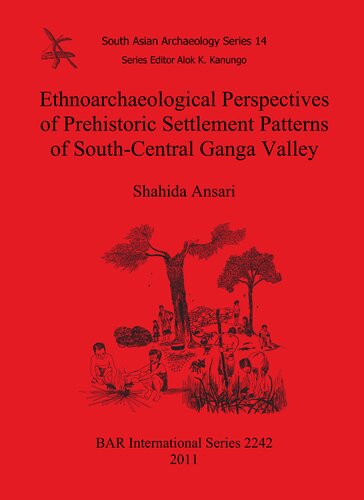

Most ebook files are in PDF format, so you can easily read them using various software such as Foxit Reader or directly on the Google Chrome browser.
Some ebook files are released by publishers in other formats such as .awz, .mobi, .epub, .fb2, etc. You may need to install specific software to read these formats on mobile/PC, such as Calibre.
Please read the tutorial at this link: https://ebookbell.com/faq
We offer FREE conversion to the popular formats you request; however, this may take some time. Therefore, right after payment, please email us, and we will try to provide the service as quickly as possible.
For some exceptional file formats or broken links (if any), please refrain from opening any disputes. Instead, email us first, and we will try to assist within a maximum of 6 hours.
EbookBell Team

4.4
52 reviewsDespite the early beginnings of agriculture in the Ganga plains and the Belan valley, the hunting-gathering way of life has not completely disappeared from the region. Communities like the Musahars live almost entirely by small-game hunting and gathering, whereas others like the Kols combine hunting-gathering with some agriculture, and the Mallah with fishing and agriculture. All three of these communities live a partly nomadic and partly sedentary life and raise several kinds of settlements ranging from temporary ones lasting only a few weeks to permanent ones lasting for many years. In the present study the author reconstructs the lifeways of the past inhabitants of this region though the study of the settlements of the three contemporary simple communities. The author places a particular emphasis on the relationship between subsistence practices, economic activities and mode of the disposal of the dead. The inhabited and abandoned residences and other structures of these three communities have been studied in detail; topics such as form, function, construction materials and techniques, disposal of cultural refuse, and location of burial and cremation grounds, are investigated. The author compares the contemporary settlements with the excavated settlements of Mesolithic and Neolithic-Chalcolithic cultures of the Ganga valley and identifies considerable similarities. The author argues that the settlements of the living communities provide useful insights for reconstructing past settlements.